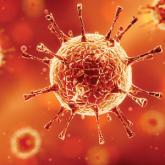Commentary
COVID-19: A Dermatologist’s Experience From the US Epicenter
Coronavirus disease 2019 can spread quickly, creating chaos in the health care system and leading to critical supply shortages within a short...
Dr. Ishack is from the New York University School of Medicine, New York. Dr. Lipner is from the Department of Dermatology, Weill Cornell Medical College, New York.
The authors report no conflict of interest.
Correspondence: Shari R. Lipner, MD, PhD, 1305 York Ave, New York, NY 10021 (shl9032@med.cornell.edu).

Practice Points
Coronavirus disease 2019 (COVID-19) has spread across all 7 continents, including 185 countries, and infected more than 21.9 million individuals worldwide as of August 18, 2020, according to the Johns Hopkins Coronavirus Resource Center. It has strained our health care system and affected all specialties, including dermatology. Dermatologists have taken important safety measures by canceling/deferring elective and nonemergency procedures and diagnosing/treating patients via telemedicine. Many residents and attending dermatologists have volunteered to care for COVID-19 inpatients and donated personal protective equipment (PPE) to hospitals reporting shortages.1 As we prepare to treat increasing numbers of in-office patients, there will be a critical need for PPE. We highlight the use of 3-dimensional (3D) imaging and printing technologies as it applies to the dermatology outpatient setting.
N95 masks are necessary during the COVID-19 pandemic because they effectively filter at least 95% of 0.3-μm airborne particles and provide adequate face seals.1 3-Dimensional imaging integrated with 3D printers can be used to scan precise facial parameters (eg, jawline, nose) and account for facial hair density and length to produce comfortable tailored N95 masks and face seals.1,2 3-Dimensional printing utilizes robotics and computer-aided design systems to layer and deposit biomaterials, thereby creating cost-effective, customizable, mechanically stable, and biocompatible constructs.1,3 An ideal 3D-printed N95 mask would be printed via fused deposition modeling, consisting of a combination of lightweight and fatigue-resistant biomaterials, including electrostatic nonwoven polypropylene and styrene-(ethylene-butylene)-styrene.1,4 The resulting masks, made from industrial-grade raw materials, are practical alternatives for dermatology practices with insufficient supplies.
Face shields offer an additional layer of safety for the face and mucosae and also may provide longevity for N95 masks. Using synthetic polymers such as polycarbonate and polyethylene, 3D printers can be used to construct face shields via fused deposition modeling.1 These face shields may be worn over N95 masks and then can be sanitized and reused.
Mohs surgeons and staff may be at particularly high risk for COVID-19 infection due to their close proximity to the face during surgery, use of cautery, and prolonged time spent with patients while taking layers and suturing. Multispectral optoacoustic tomography is a noninvasive imaging tool that can map skin tumors via optical contrast with accuracy comparable to histologic measurements.5 3-Dimensional facial imaging and printing can be used to calculate tumor surface area for customized masks, leaving sufficient skin for excision and reconstruction. Patient face coverings would cover the nose and mouth, only expose relevant areas near the excision site, and include adjustable/removable ear loops for tumors localized to the ears. A schematic of how 3D technologies can be applied for Mohs micrographic surgery is provided in the Figure.
As dermatologists reopen and ramp up practice volume, there will be increased PPE requirements. Using 3D technology and imaging to produce N95 masks, face shields, and face coverings, we can offer effective diagnosis and treatment while optimizing safety for dermatologists, staff, and patients.
Coronavirus disease 2019 can spread quickly, creating chaos in the health care system and leading to critical supply shortages within a short...
Telehealth can increase access to dermatologic care for both inpatient hospital consultations and outpatient clinic visits, especially in areas...

Although COVID-19 does not have known dermatologic manifestations, it has the potential for wide-reaching impact on our field.
